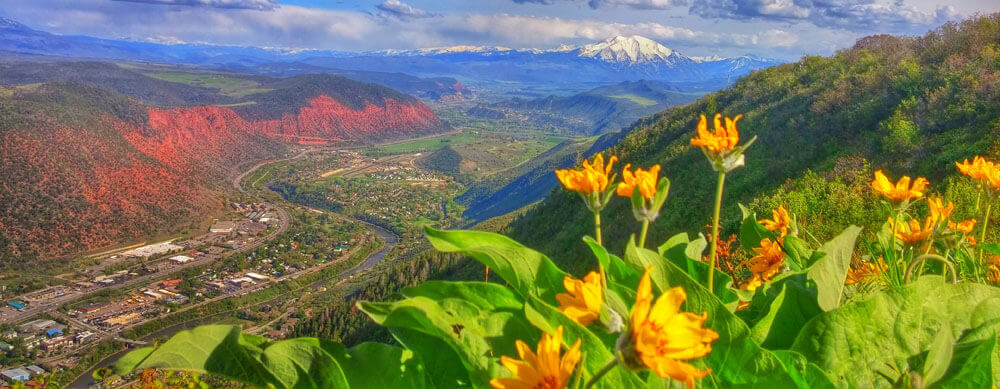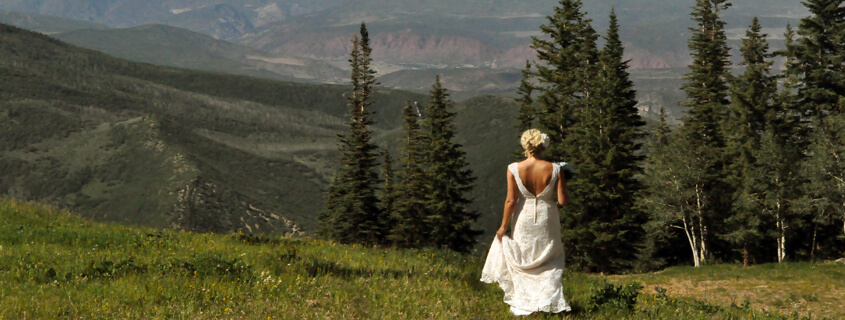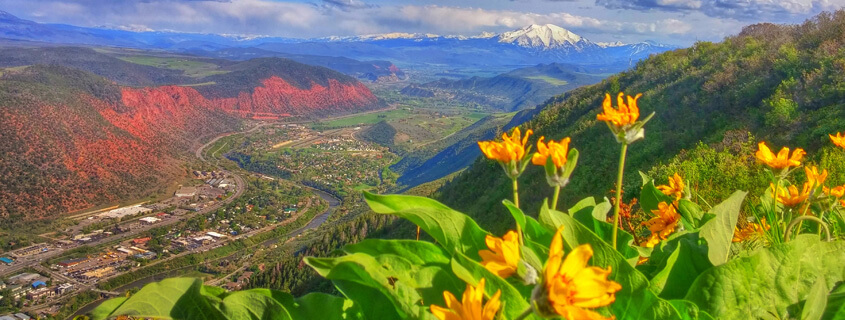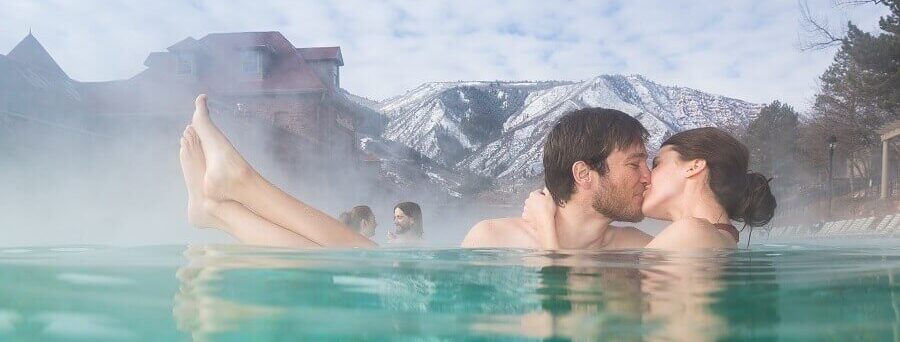Much more than pretty scenery, the landscape tells the background story of Glenwood Springs and the surrounding area. Hot springs are the most well-known result of geologic activity, but even more fascinating details are etched in the earth for those willing to take a closer look.
Glenwood Springs as we know it is less than 200 years old. That seems like a long time. Considering the Earth is about 4.5 billion years old, a couple of hundred years barely register. During that time, geological processes such as heat, pressure, erosion, sedimentation and weathering have been at work slowly forming the familiar and stunning scenery that attracts visitors year-round to Glenwood Springs.
Mt. Sopris
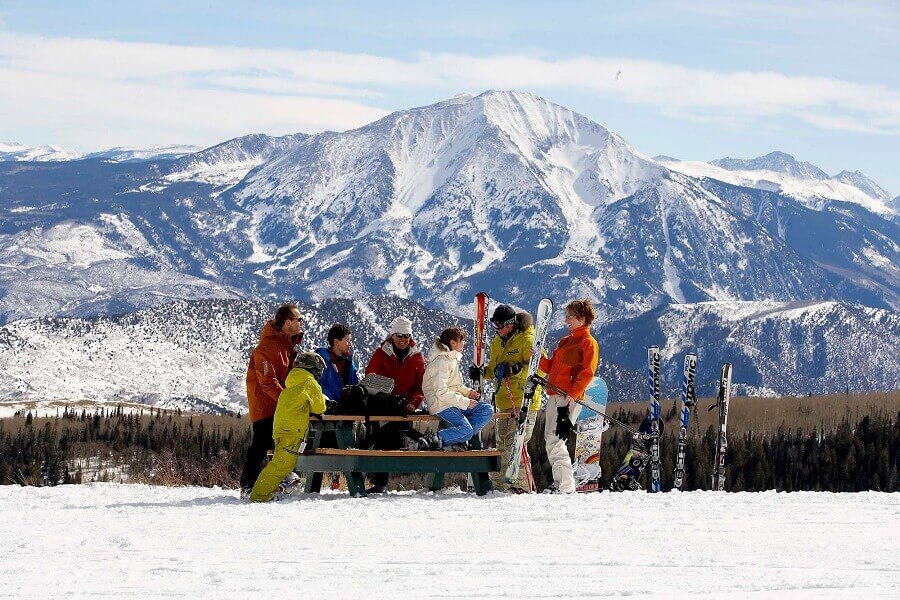 This stunning snowcapped peak 15 miles to the south of Glenwood Springs is an example of an igneous intrusion. That’s geologic speak for what happened when molten rock was forced upwards, elevating the overlying terrain. The rock that was pushed up has since eroded, leaving behind the Roaring Fork Valley’s signature peak. Mt. Sopris is a favorite with climbers in the summer months and ticks in at 12,965 feet above sea level.
This stunning snowcapped peak 15 miles to the south of Glenwood Springs is an example of an igneous intrusion. That’s geologic speak for what happened when molten rock was forced upwards, elevating the overlying terrain. The rock that was pushed up has since eroded, leaving behind the Roaring Fork Valley’s signature peak. Mt. Sopris is a favorite with climbers in the summer months and ticks in at 12,965 feet above sea level.
Caves
 About 325 million years ago, a shallow sea covered most of western Colorado. It was teeming with sea life of all kinds. When they died, their carcasses sank to the bottom, building a thick layer of calcium carbonate. Over time, the weight and pressure of the water compressed them into limestone, the porous rock found throughout Glenwood Canyon. As water and rain soaked into the rock, carbonic acid formed from decaying vegetation and hollowed out caves in the limestone rock. Visitors can explore the underground landscape on cave tours at Glenwood Caverns Adventure Park.
About 325 million years ago, a shallow sea covered most of western Colorado. It was teeming with sea life of all kinds. When they died, their carcasses sank to the bottom, building a thick layer of calcium carbonate. Over time, the weight and pressure of the water compressed them into limestone, the porous rock found throughout Glenwood Canyon. As water and rain soaked into the rock, carbonic acid formed from decaying vegetation and hollowed out caves in the limestone rock. Visitors can explore the underground landscape on cave tours at Glenwood Caverns Adventure Park.
Hanging Lake
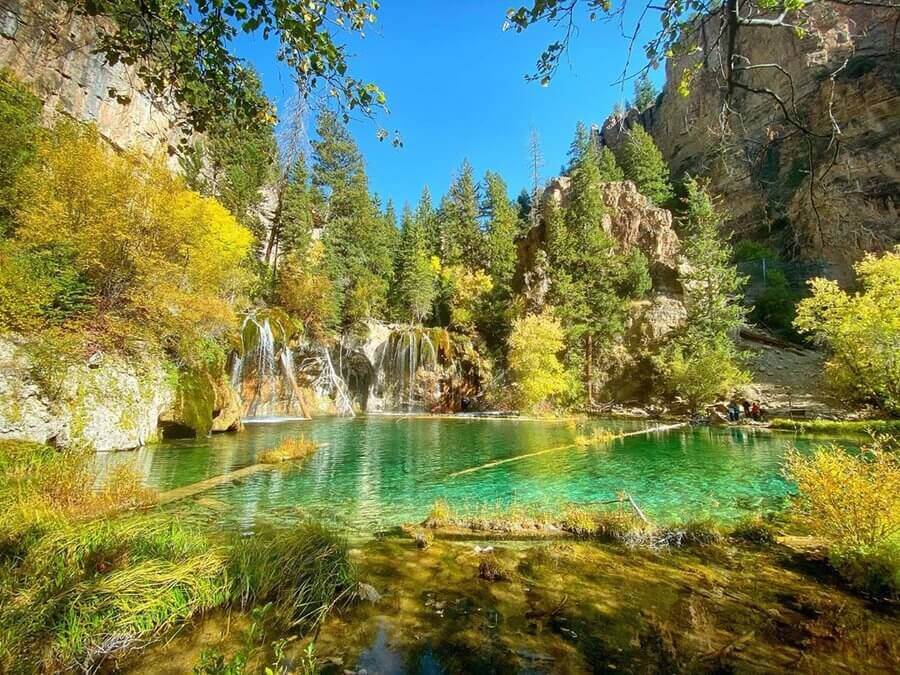 One of the most popular hikes in Colorado, Hanging Lake is geologically so extraordinary that it has been designated a National Natural Landmark both to recognize its rarity and protect it for future generations. Eons ago, the rock that now cradles the lake sheared off from the valley above. Snowmelt from the Flat Tops Wilderness Area streamed down the valley emptying into the resulting depression. Gradually, a layer of travertine built up around the edges of the crater, forming a lake situated high up on a cliff in Glenwood Canyon. To hike to Hanging Lake on your next visit to Glenwood Springs, purchase a permit online for just $12 May through October or $10 November through April.
One of the most popular hikes in Colorado, Hanging Lake is geologically so extraordinary that it has been designated a National Natural Landmark both to recognize its rarity and protect it for future generations. Eons ago, the rock that now cradles the lake sheared off from the valley above. Snowmelt from the Flat Tops Wilderness Area streamed down the valley emptying into the resulting depression. Gradually, a layer of travertine built up around the edges of the crater, forming a lake situated high up on a cliff in Glenwood Canyon. To hike to Hanging Lake on your next visit to Glenwood Springs, purchase a permit online for just $12 May through October or $10 November through April.
Hot Springs
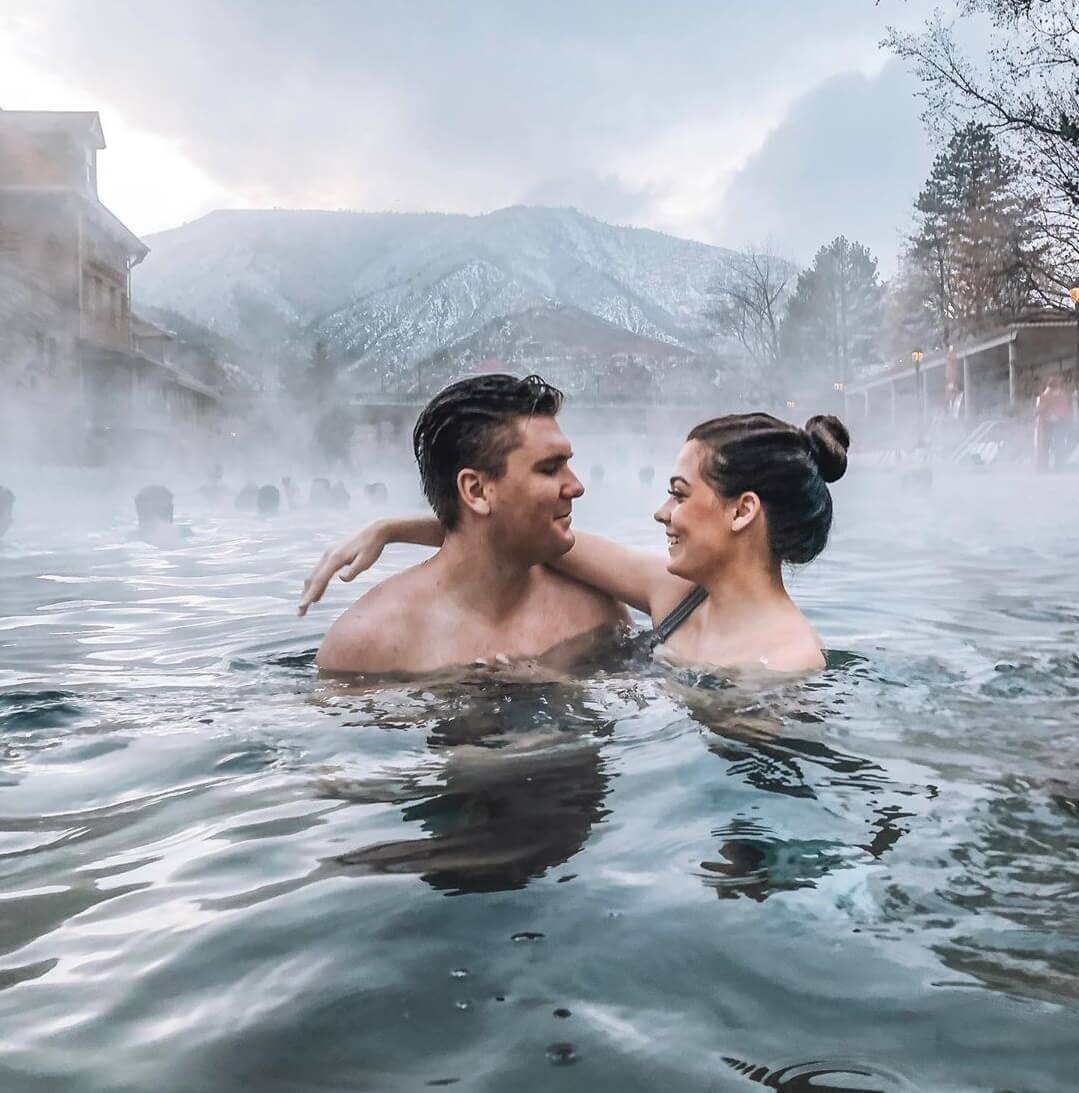 The same forces that generated the network of caves in the Colorado River Valley also created the hot springs for which Glenwood Springs is famous. Glenwood Hot Springs Pool, Iron Mountain Hot Springs and Yampah Spa and Vapor Caves owe their origins to the earth shifting during the mountain-building phase. Rocks twisted and fractured creating cracks through which heated water from deep within the earth could come to the surface. According to some estimates, the water that bubbles to the surface today fell as rain some 20,000 years ago!
The same forces that generated the network of caves in the Colorado River Valley also created the hot springs for which Glenwood Springs is famous. Glenwood Hot Springs Pool, Iron Mountain Hot Springs and Yampah Spa and Vapor Caves owe their origins to the earth shifting during the mountain-building phase. Rocks twisted and fractured creating cracks through which heated water from deep within the earth could come to the surface. According to some estimates, the water that bubbles to the surface today fell as rain some 20,000 years ago!
Dotsero Volcano
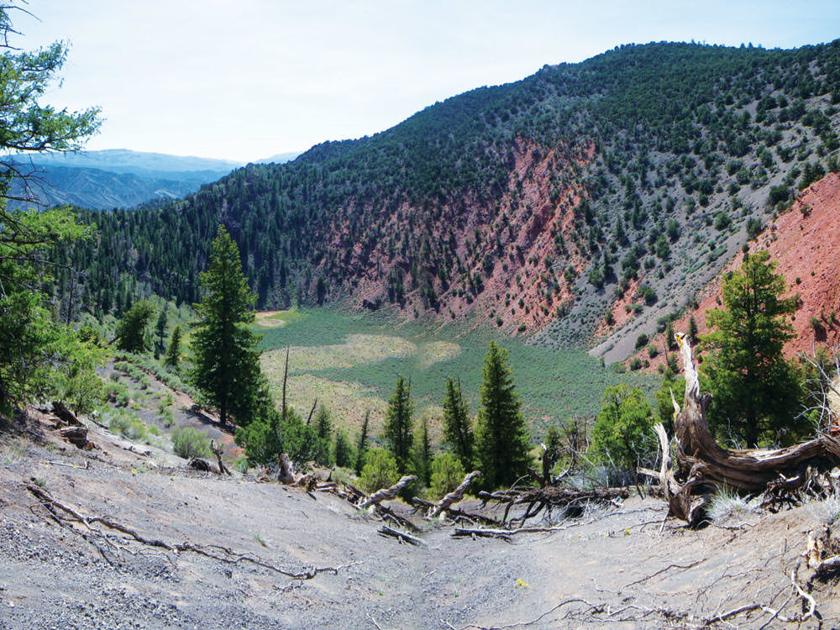 Many people are surprised to learn that when they drive westbound to Glenwood Springs along Interstate 70 they are passing by a volcano! Considered Colorado’s “youngest” volcano, Dotsero last erupted around 4,200 years ago, spewing lava and rock fragments. The cone is still visible and dark, porous “lava rock” is scattered all around the site. The United States Geological Survey (USGS) actively monitors Dotsero, which poses a “moderate” threat of erupting again. Visitors can see the volcano up close via an out-and-back trail near the Dotsero exit along I-70.
Many people are surprised to learn that when they drive westbound to Glenwood Springs along Interstate 70 they are passing by a volcano! Considered Colorado’s “youngest” volcano, Dotsero last erupted around 4,200 years ago, spewing lava and rock fragments. The cone is still visible and dark, porous “lava rock” is scattered all around the site. The United States Geological Survey (USGS) actively monitors Dotsero, which poses a “moderate” threat of erupting again. Visitors can see the volcano up close via an out-and-back trail near the Dotsero exit along I-70.
Learn more rockin’ fun facts about Glenwood Springs and make plans to visit today!
Download the official Glenwood Springs Travel Guide
Sources cited:
- Glenwood Springs: A Quick History
- Eighth Wonder: The Story of Glenwood Caverns and the Historic Fairy Caves
- Glenwood Canyon: From Origin to Interstate
- Glenwood Springs: The History of a Rocky Mountain Resort
- USGS: Dotsero Volcanic Center


